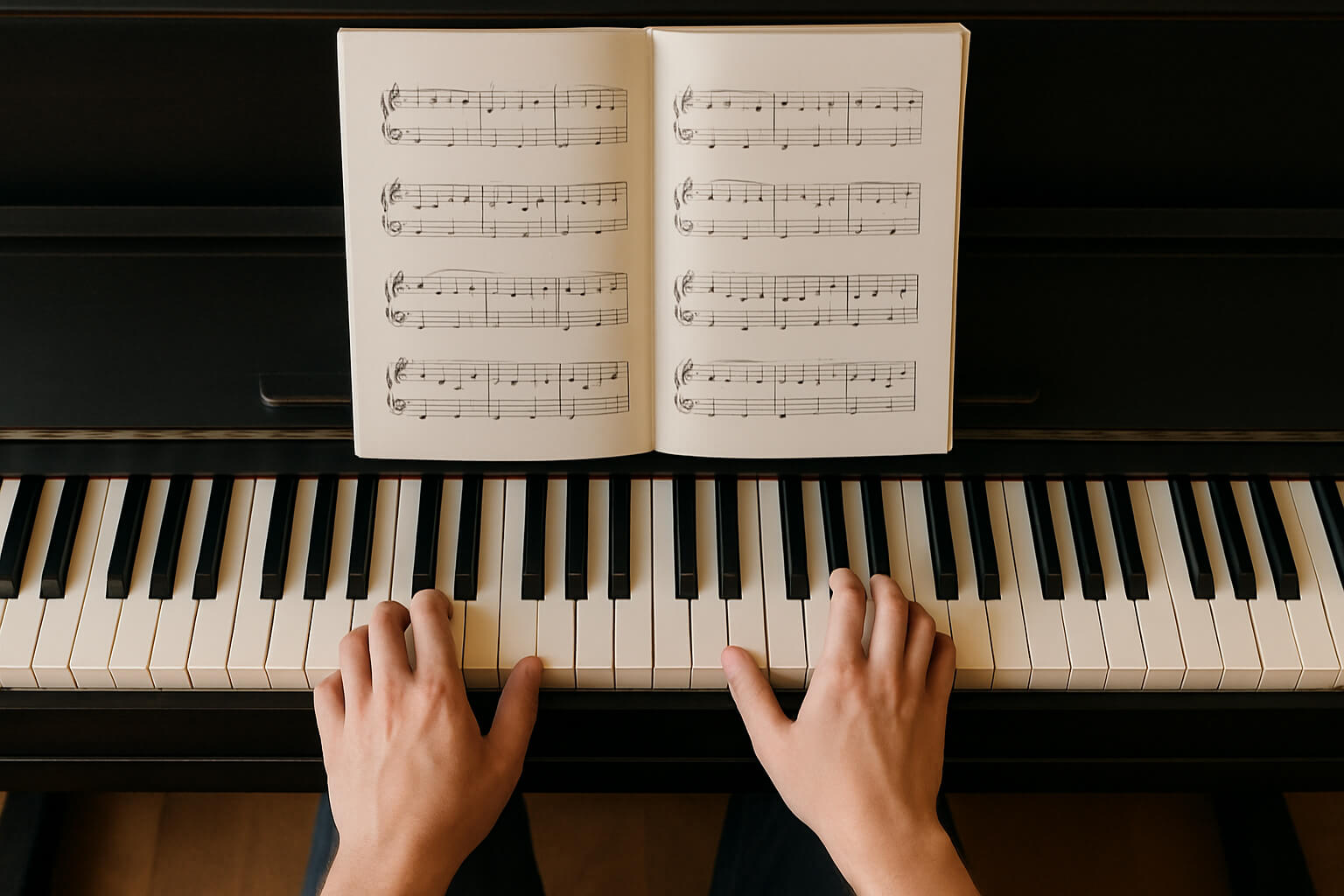August 13, 2025

Whether you're just starting or returning to the keys after a break, learning classic songs can be the most fulfilling and motivating part of your piano journey. These pieces are widely recognized, musically enriching, and strategically beneficial for building core skills like rhythm, finger dexterity, and expressive playing.
Here’s a detailed guide to classic piano songs every beginner should know—paired with smart learning tips and supplementary resources to help you grow beyond the basics.
An iconic piece in the piano repertoire, “Für Elise” is surprisingly approachable for beginners.
Sheet Music: IMSLP.org
Related Resource: The Ultimate Guide to Music Reading for Beginners
This classic ballad is beginner-friendly and a great introduction to playing chords in rhythm.
Tutorial: Piano Lessons On The Web
Related Resource: Ear Training Exercises – How to Hear Chords and Melodies
With its hypnotic arpeggios, “Clocks” teaches modern playing patterns and rhythmic flow.
Sheet Music: MusicNotes.com
Extra Tip: Learn how rhythm shapes music in Why Understanding Rhythm is Crucial
This regal piece is ideal for developing chord recognition and melodic layering.
Sheet Music: 8notes.com
Expand your knowledge with: Understanding Chord Progressions
A deeply emotional piece that beginners can access through simplified versions.
Tutorial: Pianote
Related Read: The Role of Improvisation in Jazz and Blues
With its iconic broken chords, this ballad is both elegant and approachable.
Sheet Music: Sheet Music Direct
Boost your memory with: How to Memorize Songs Quickly and Effectively
A Baroque masterpiece that builds fluid finger movement and hand independence.
Sheet Music: IMSLP
Learn the foundations with: The Benefits of Learning Music Theory
A timeless piece, often played as a piano-vocal ballad or instrumental solo.
Tutorial: Flowkey
Explore: The Psychological Benefits of Playing a Musical Instrument
Silly but effective, this song builds finger coordination and timing.
Use it in daily drills from: Practice Makes Perfect – Effective Strategies
Although emotionally complex, the first movement is slow and playable by patient beginners.
Tutorial: Piano Tutorial Easy (YouTube)
Further reading: Understanding Classical Music – Composers, Eras, and Forms
Practicing smart is better than just practicing hard. Here are essential strategies to stay on track:
Also check: Free 7-Day Piano Challenge – Start Learning Today
From Beethoven to Adele, these classic piano songs aren’t just stepping stones—they’re the foundation of your musical voice. Each song teaches you a different aspect of playing: some develop your technical chops, others unlock emotional depth. Pair them with strong practice routines, thoughtful theory understanding, and effective listening skills—and you’re well on your way to becoming a confident pianist.
If you’re looking for a little extra help, consider tools like:
Stay up to date with the latest tips, expert insights, product reviews, and step-by-step guides to help you grow, create, and succeed—no matter your industry or passion.